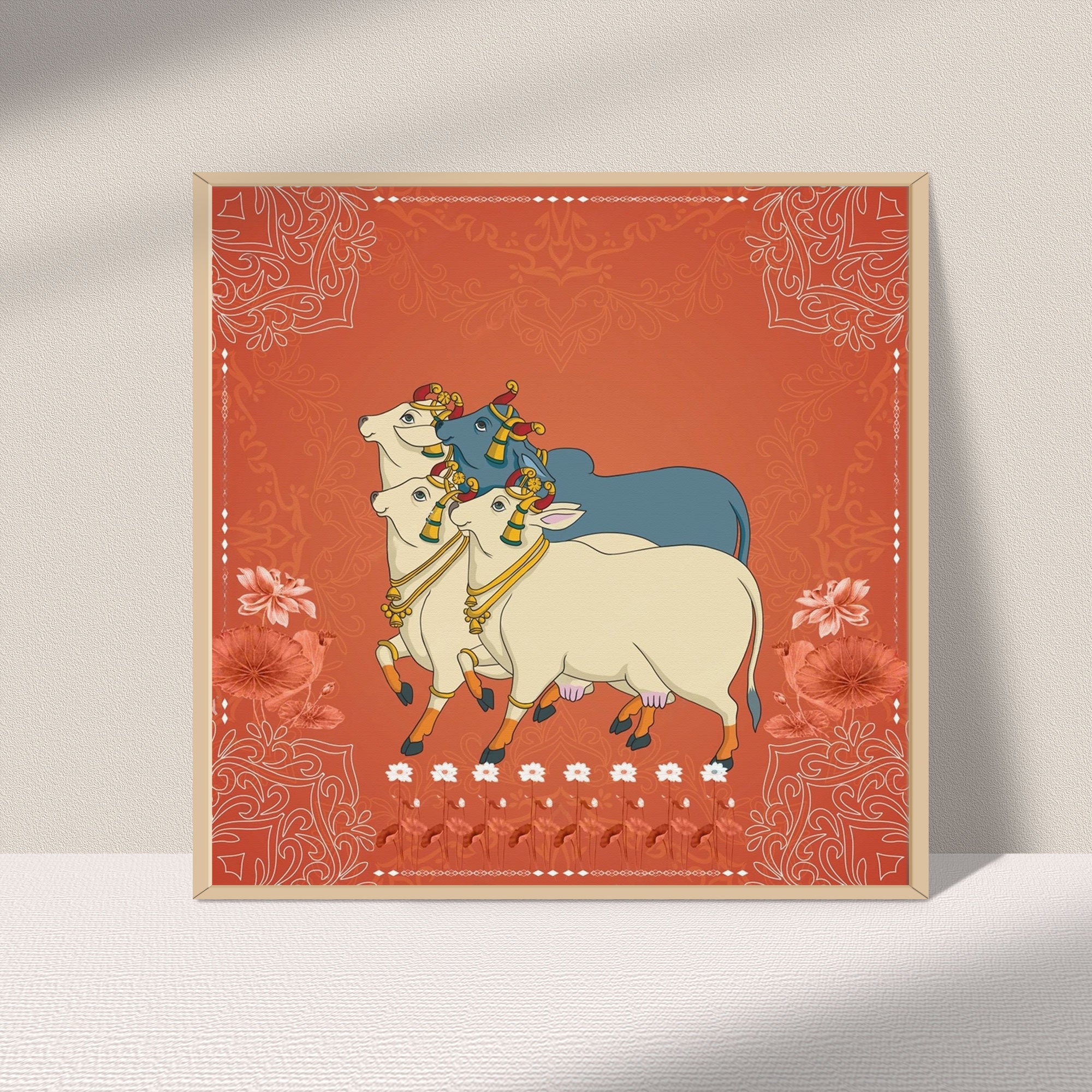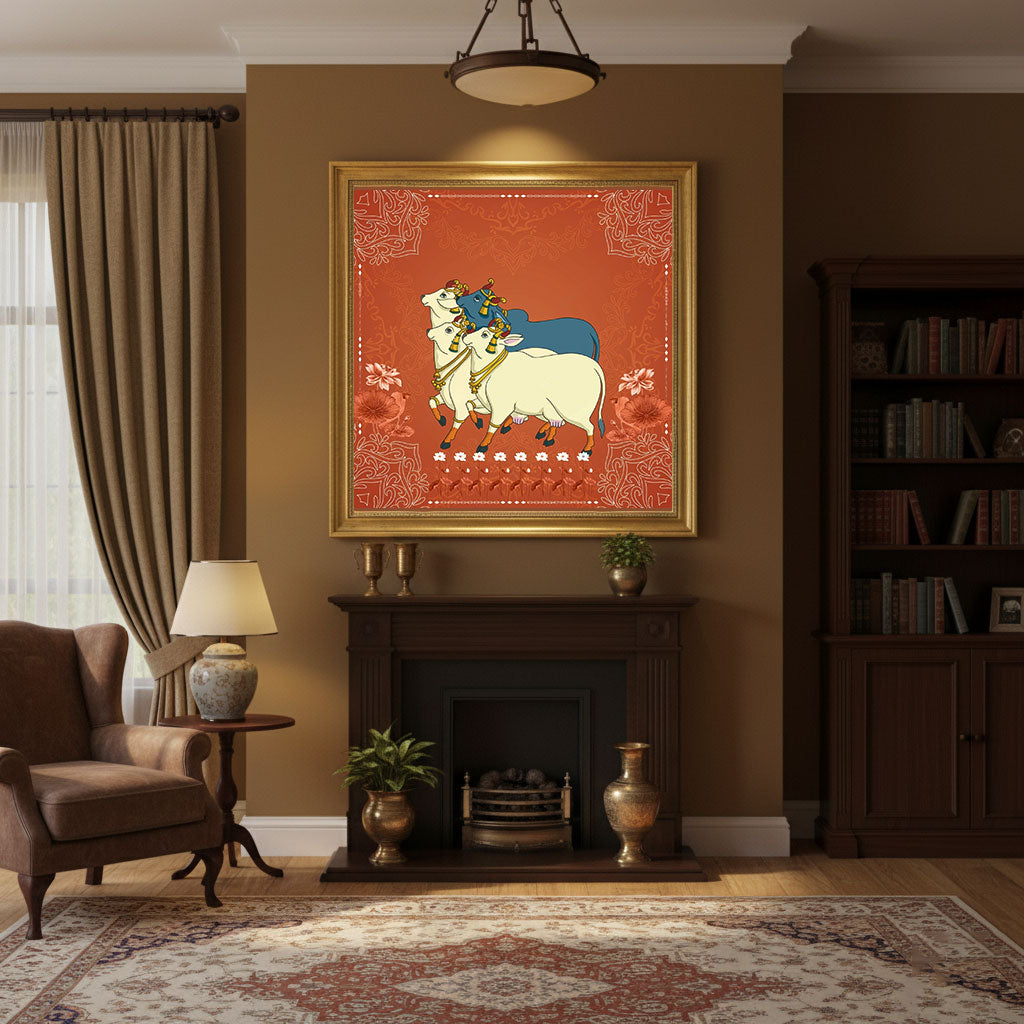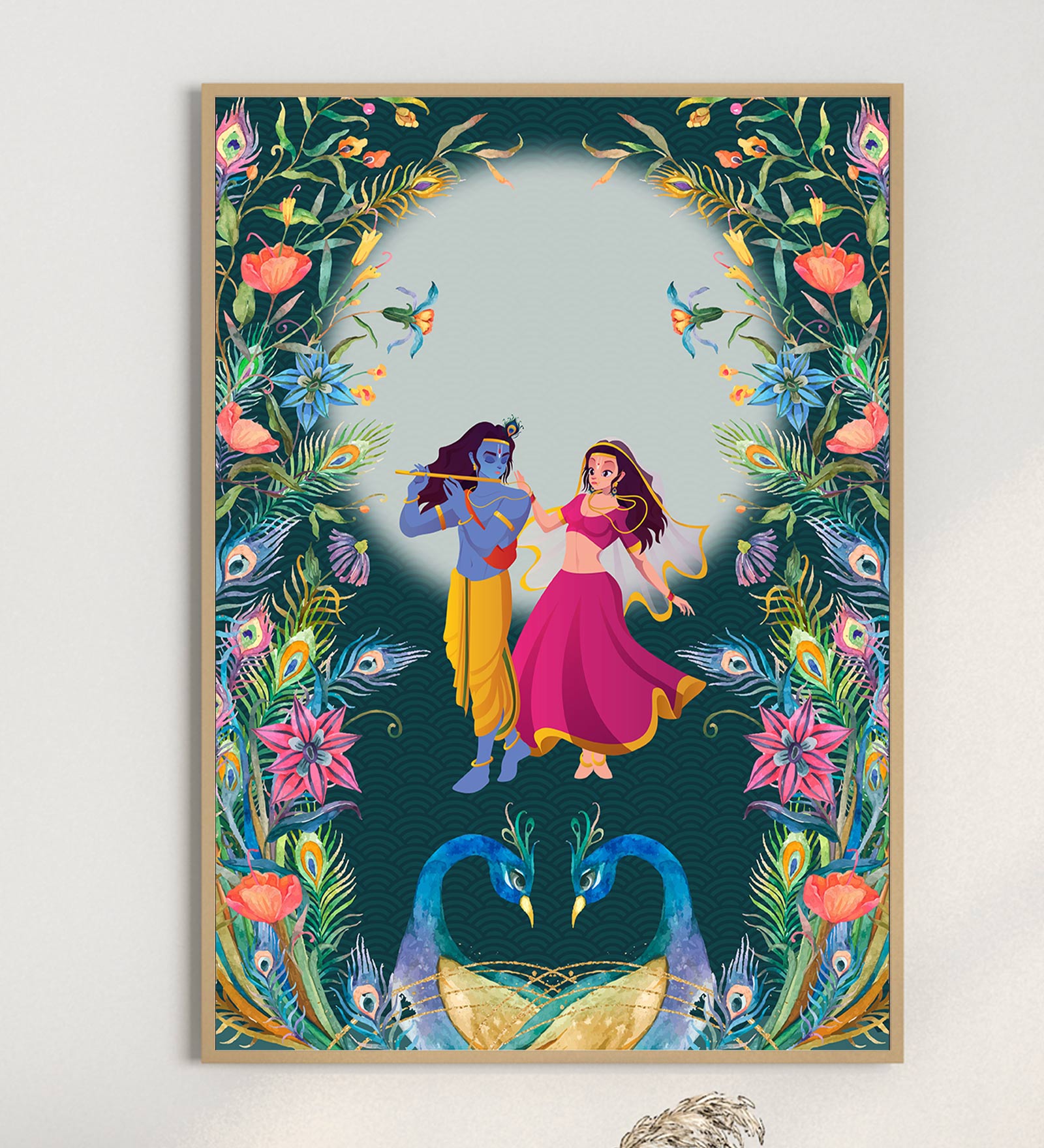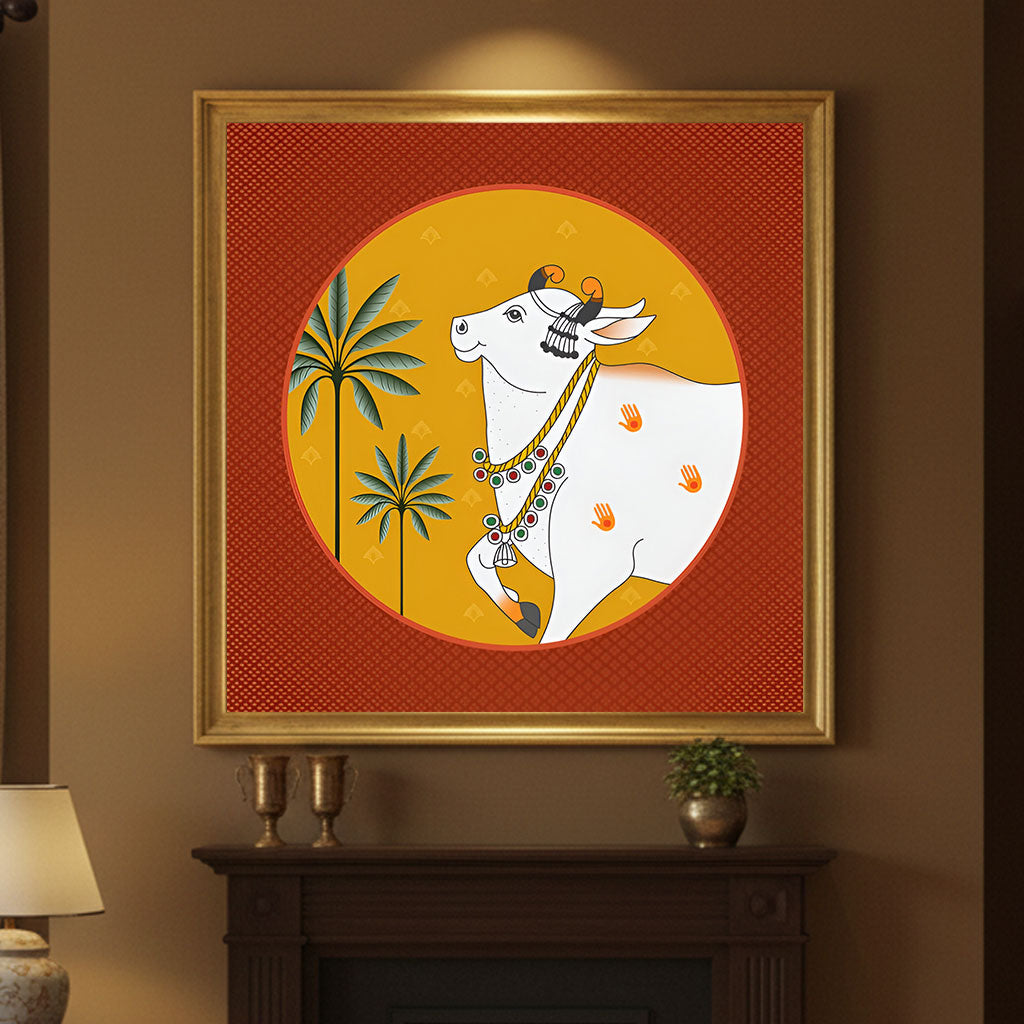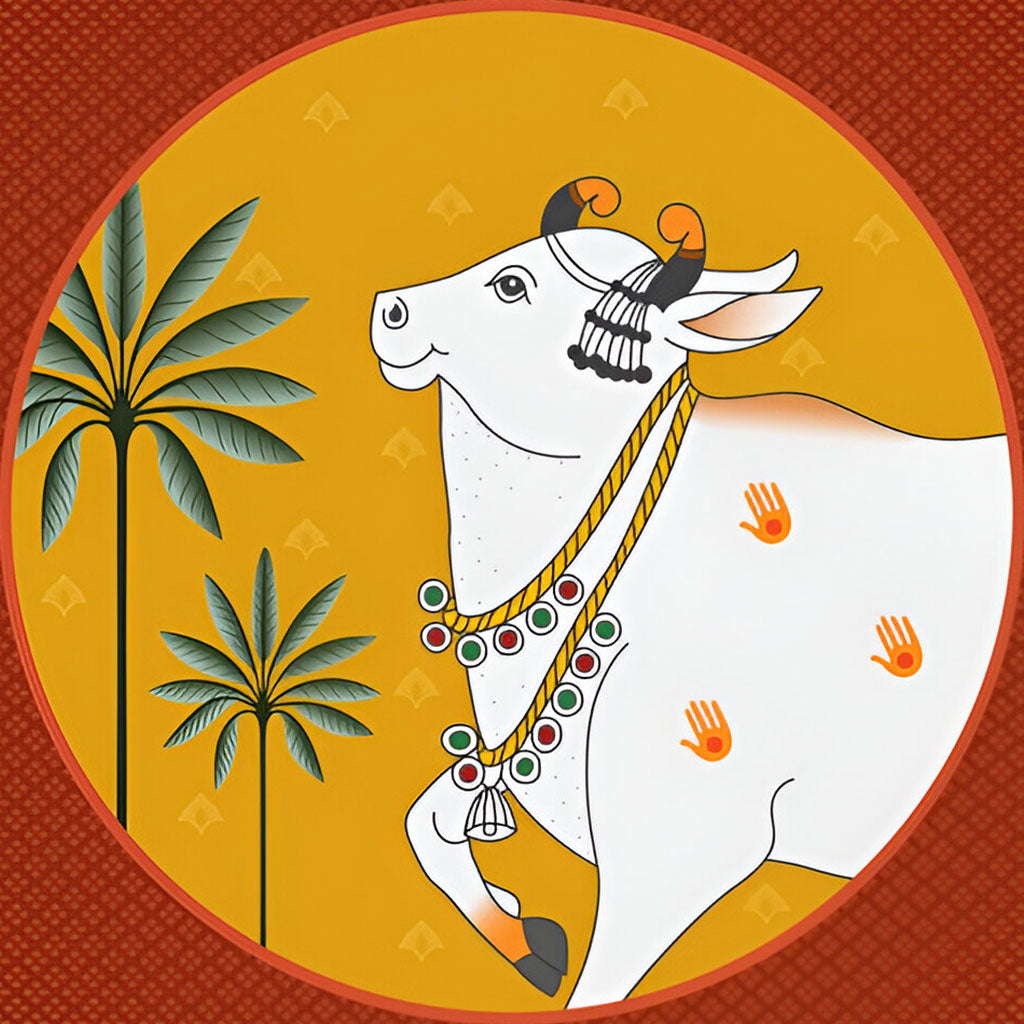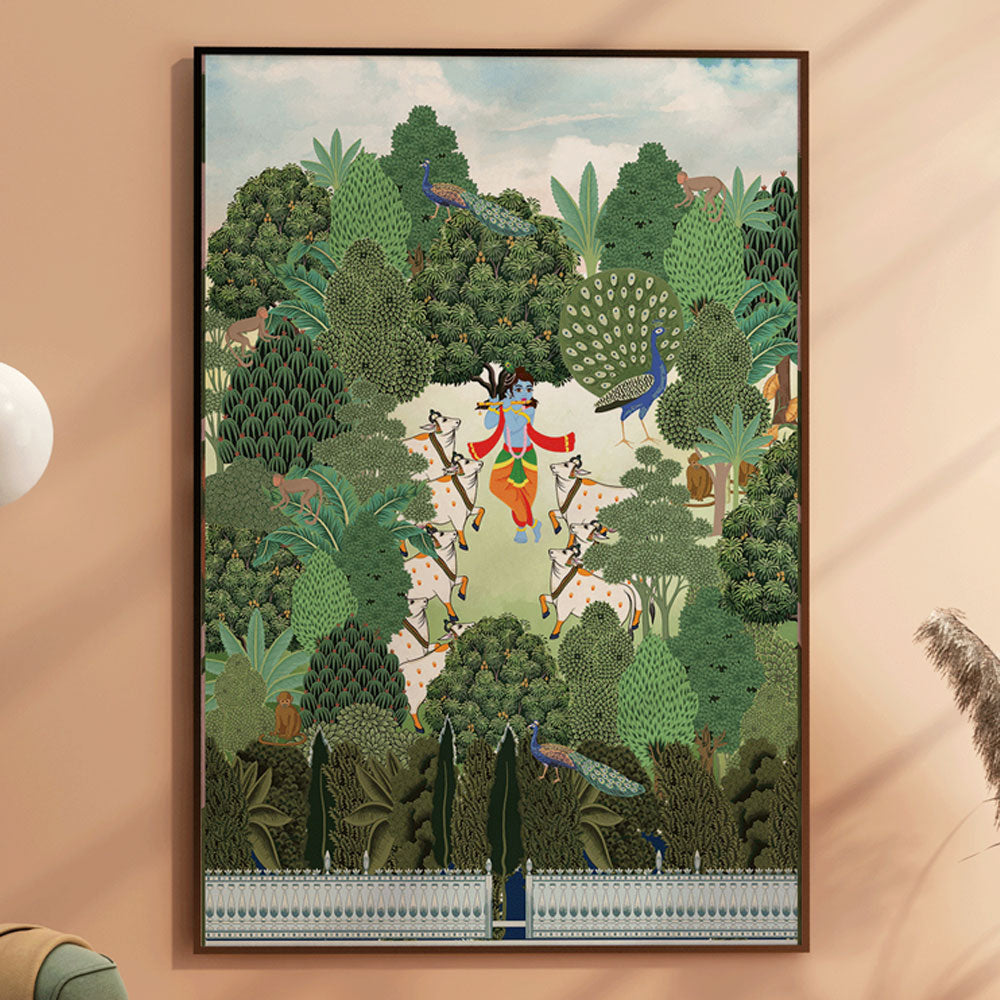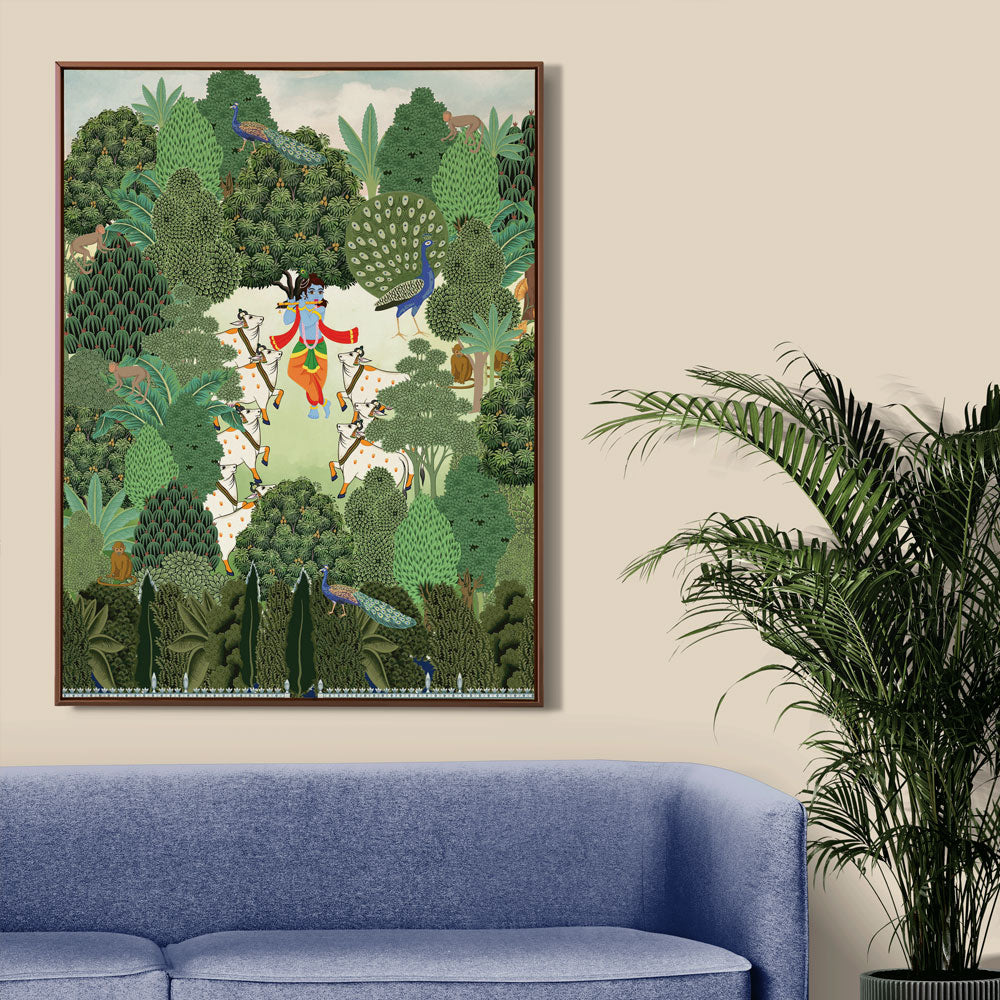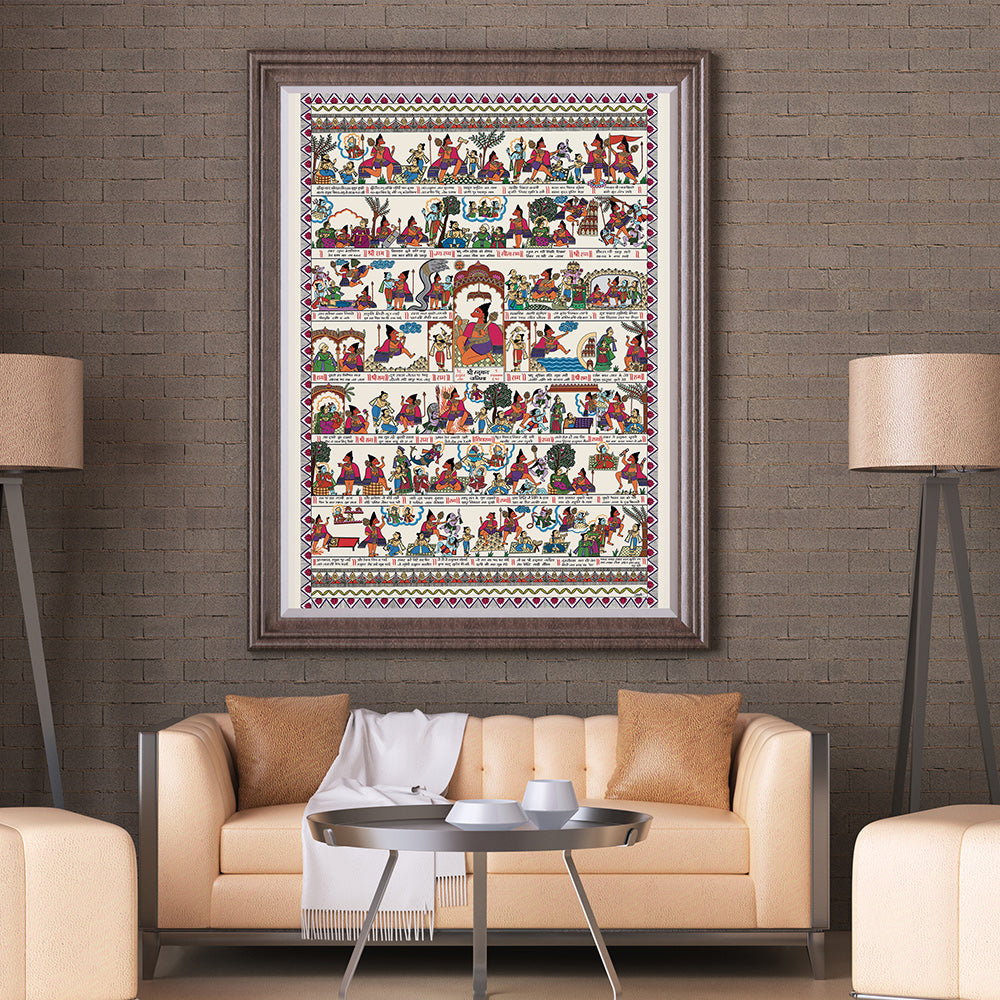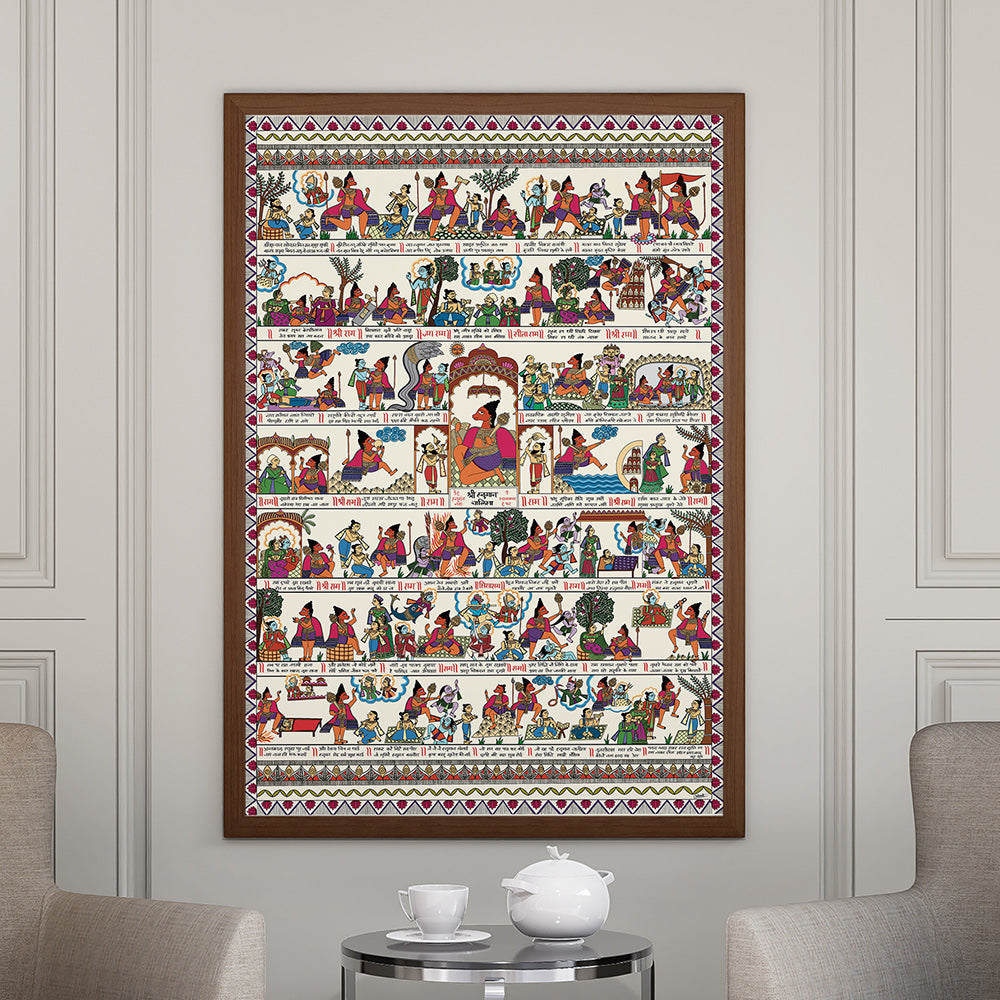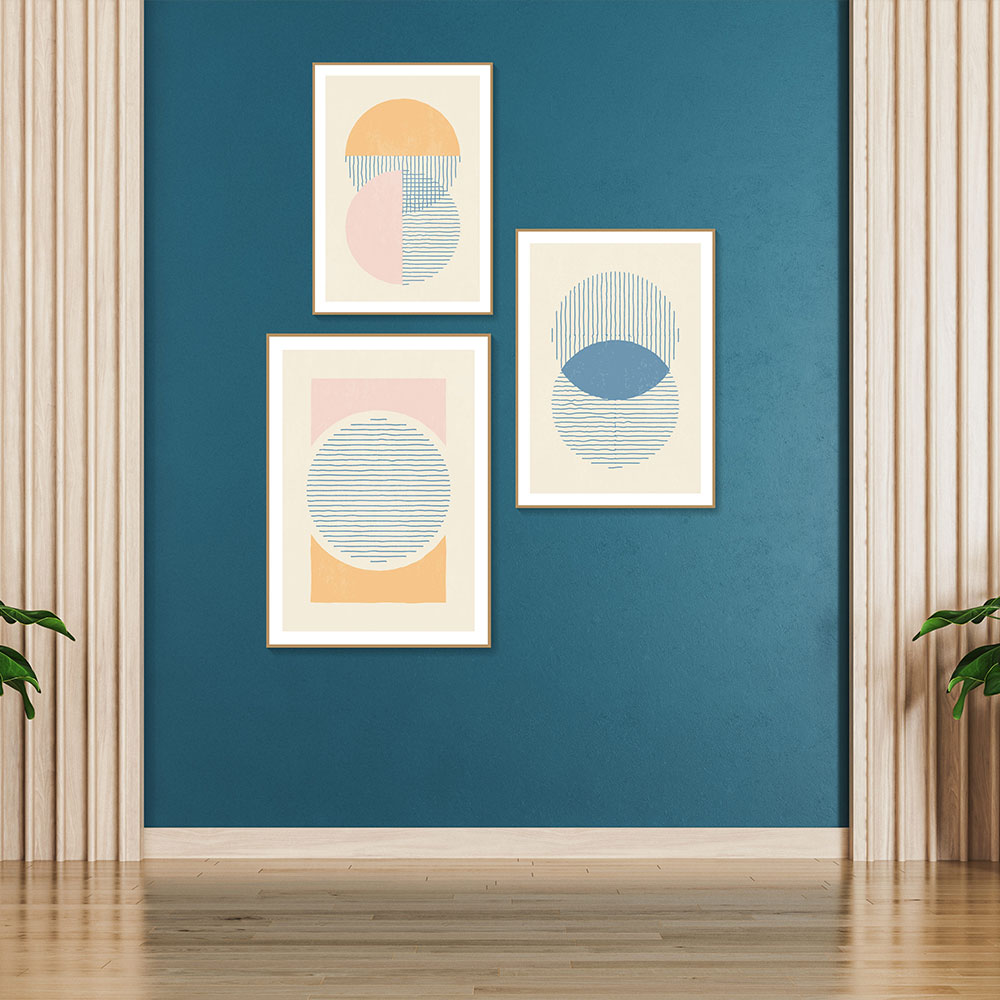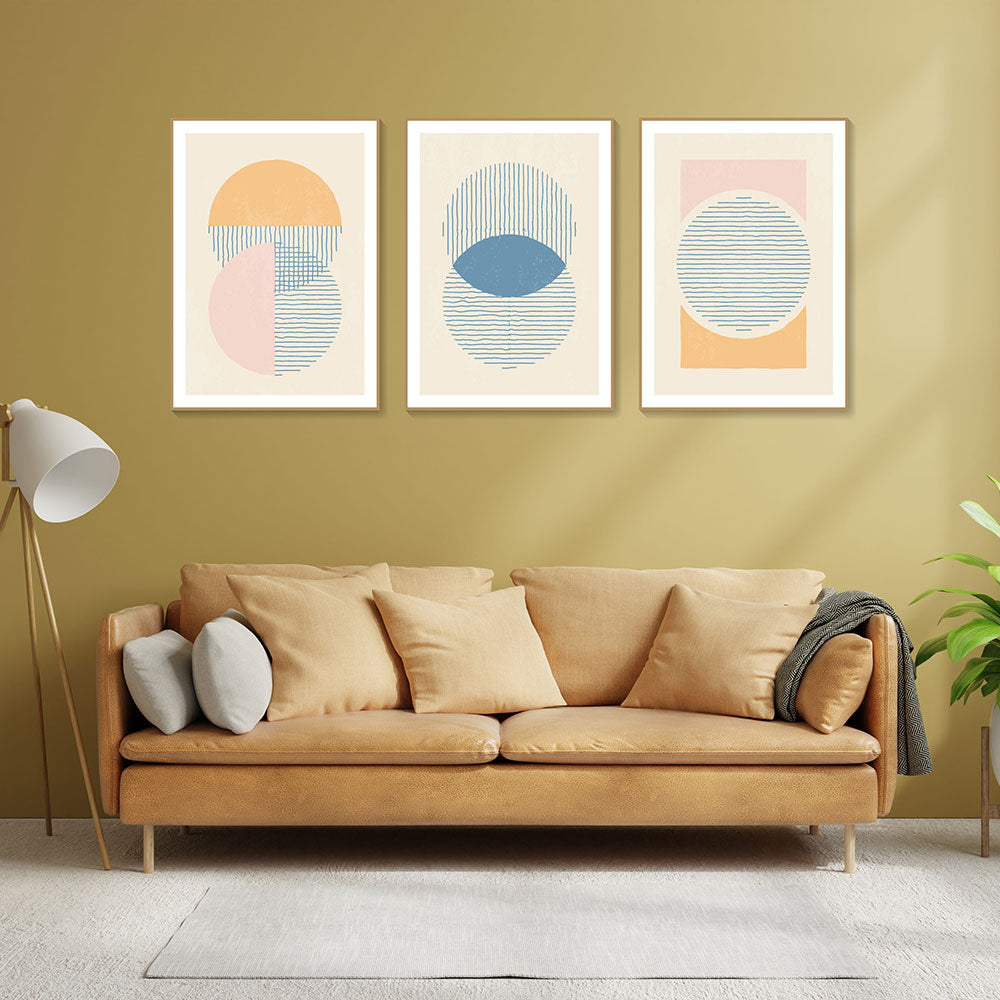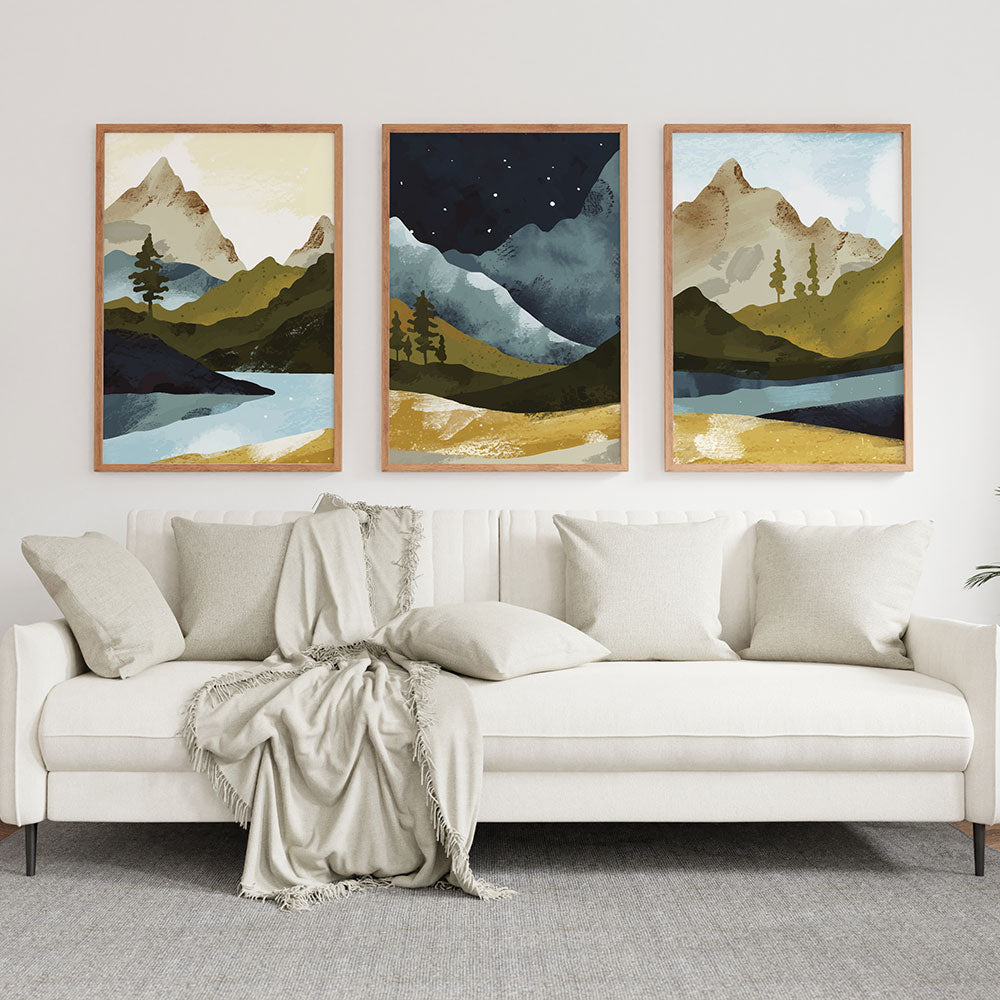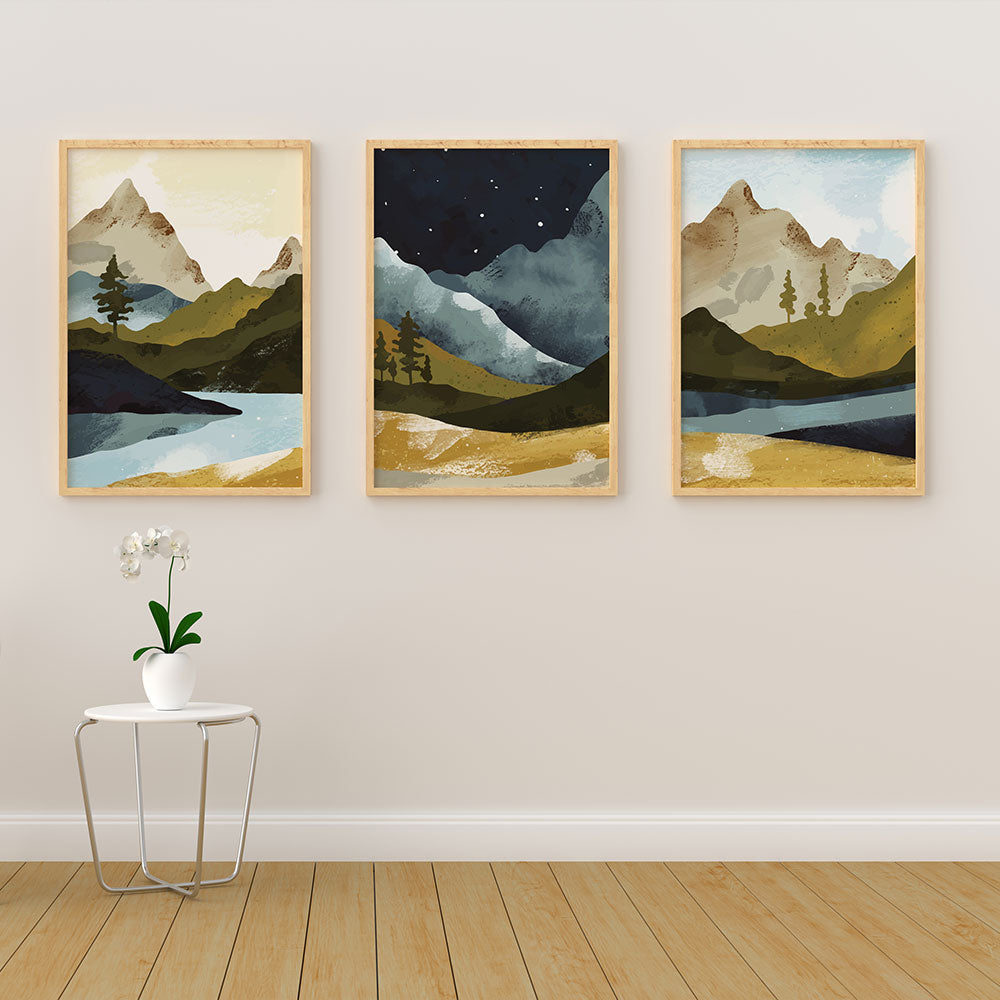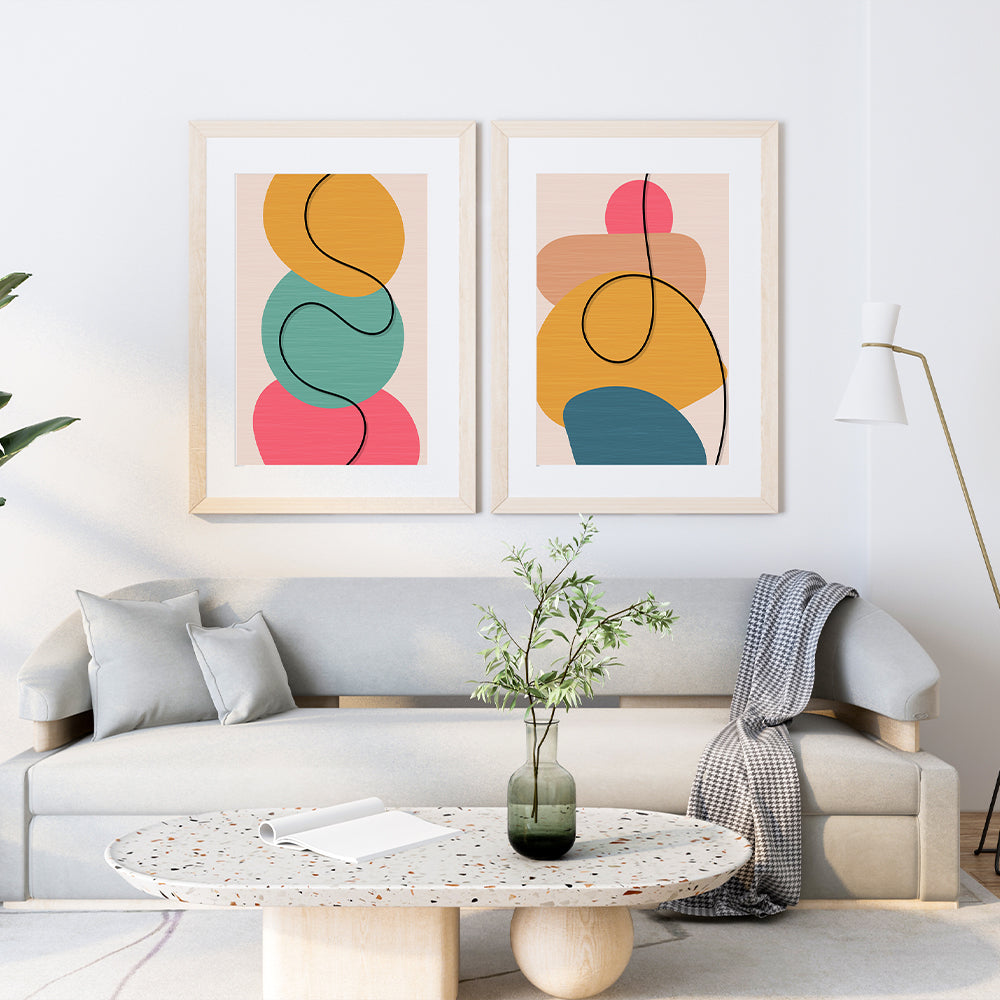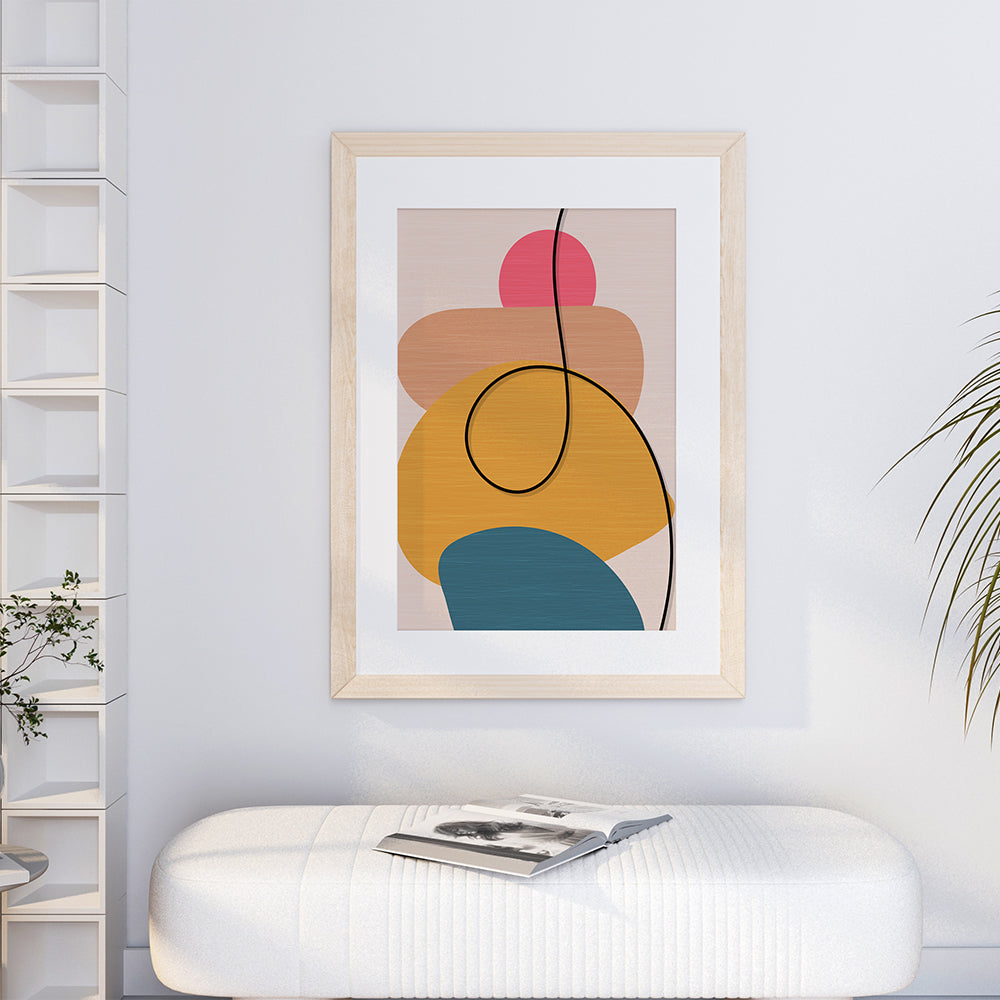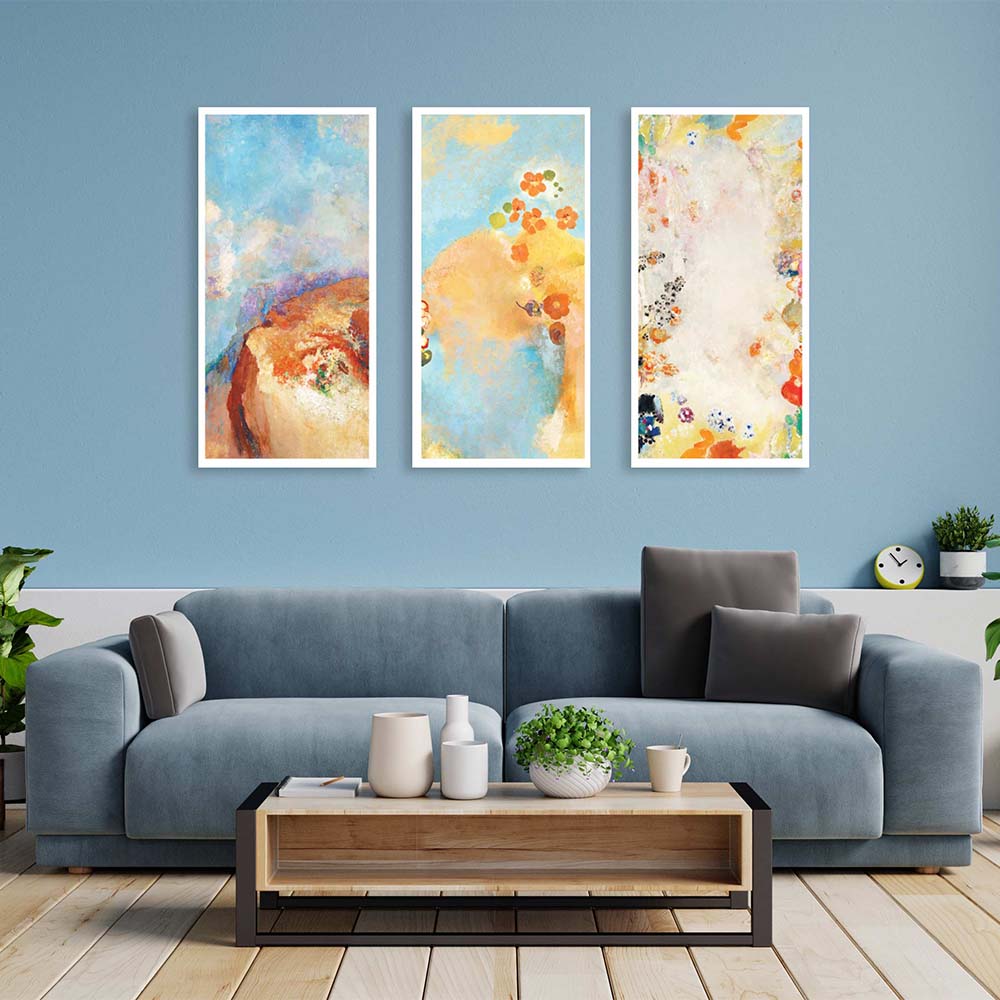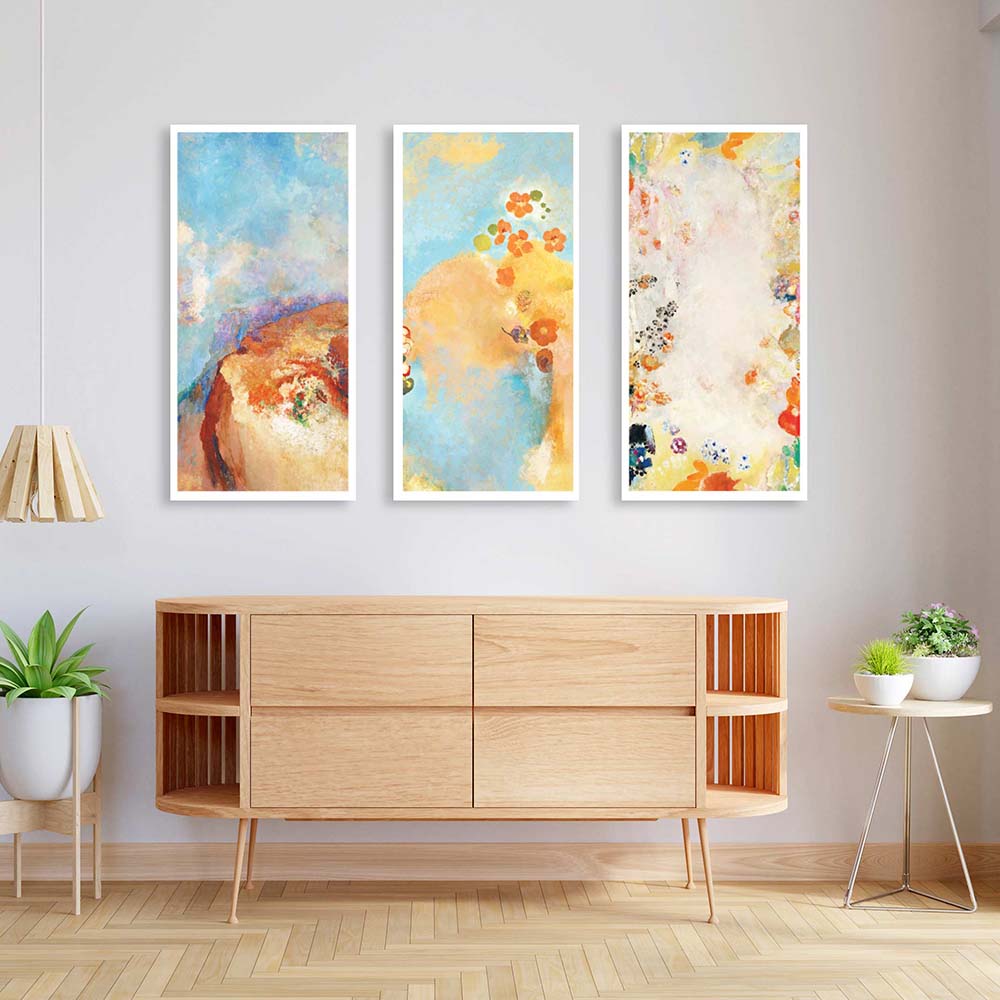Buddha Paintings for Meditation Corners, Living Rooms & Beyond
Buddha paintings offer a timeless and universal pathway to achieve this, transcending cultural boundaries to bring a palpable sense of peace and mindfulness into any space.
In today's bustling world, our homes are increasingly becoming sanctuaries – places where we seek solace, recharge our spirits, and reconnect with our inner selves. Buddha art, with its serene imagery and deep symbolism, is perfectly suited to this modern desire for mindful living and harmonious environments.
At Krutik, we appreciate that art is more than just decor; it's an expression of soul, a source of inspiration, and a conduit for positive energy. Our curated collection of Buddha paintings blends traditional wisdom with contemporary aesthetics, ensuring you find the perfect piece to resonate with your modern home.
Join us on a journey as we explore how Buddha paintings can transform your meditation corners, infuse serenity into your living rooms, and bring a deeper sense of peace to every nook and cranny of your home and beyond.
The Enduring Appeal of Buddha Paintings: More Than Just Art
The image of Buddha, whether meditating, reclining, or engaging in various mudras (hand gestures), has captivated hearts and minds for centuries. Its appeal lies not just in its aesthetic beauty, but in the profound principles it embodies:
-
Peace and Serenity: The most immediate impact of a Buddha painting is its ability to evoke a sense of calm. The serene expression, the meditative posture – all contribute to an atmosphere of tranquility that can help reduce stress and anxiety.
-
Wisdom and Enlightenment: Buddha represents the awakened mind, a journey towards self-realization and ultimate truth. His image serves as a gentle reminder of the path to wisdom and spiritual growth.
-
Mindfulness and Presence: In a world of distractions, a Buddha painting encourages mindfulness – the practice of being fully present in the moment, fostering inner peace and clarity.
-
Compassion and Kindness: At the heart of Buddhist teachings are compassion (Karuna) and loving-kindness (Metta). The benevolent aura of Buddha art can inspire these qualities within your home.
-
Positive Energy (Vastu & Feng Shui): Many traditions, including Vastu Shastra and Feng Shui, suggest that Buddha paintings help eliminate negative energy, attract positive vibes, and bring harmony and balance into an environment.

Top Buddha Painting Ideas for Every Space
The versatility of Buddha paintings means there's a perfect style and depiction for every room and every intention.
1. Meditating Buddha: For Focus & Inner Peace
This is perhaps the most iconic depiction of Buddha, seated in a lotus position (Padmasana) with eyes often closed or partially open, hands typically in the Dhyana Mudra (meditation gesture).
-
Ideal for:
-
Meditation Corners: This is its natural home. Placed at eye level, a meditating Buddha painting becomes a powerful focal point for your personal mindfulness practice, enhancing concentration and spiritual focus.
-
Study Rooms/Home Offices: To promote calm, clarity of thought, and reduce stress during intense work or study sessions.
-
Quiet Nooks/Reading Areas: Creating a serene spot for reflection.
-
Aesthetic Considerations:
-
Colors: Favor soft, calming colors like blues, whites, beiges, muted greens, or subtle golds.
-
Style: Can range from traditional detailed depictions to minimalist or abstract interpretations where the essence of meditation is conveyed through color fields or fluid lines.
-
Symbolism: Emphasizes mindfulness, self-realization, and spiritual awakening.
2. Reclining Buddha: For Tranquility & Serenity
Depicts Buddha in a relaxed, peaceful reclining pose, often symbolizing his final moments before attaining Nirvana, or entering Parinirvana. It represents ultimate peace and liberation.
-
Ideal for:
-
Bedrooms: Promotes a deep sense of tranquility and a serene atmosphere conducive to rest and peaceful sleep.
-
Relaxation Areas: Any space dedicated to unwinding and de-stressing.
-
Healing Spaces: For those seeking solace and a sense of calm during recovery.
-
Aesthetic Considerations:
-
Colors: Soft, muted palettes are often preferred to enhance the feeling of calm.
-
Style: Often detailed, but can also be minimalist, focusing on the graceful lines of the reclining form.
-
Symbolism: Represents ultimate peace, liberation, and the journey towards spiritual enlightenment.
3. Laughing Buddha: For Joy & Abundance
While technically not Siddhartha Gautama Buddha (the historical Buddha), the Laughing Buddha (Hotei or Budai in various cultures) is a popular figure in Buddhist folk traditions, symbolizing happiness, abundance, good fortune, and contentment. He is often depicted with a large belly and a joyful smile.
-
Ideal for:
-
Living Rooms: To attract positivity, foster a joyful atmosphere, and bring good fortune to the household. Often placed facing the main entrance (not directly opposite).
-
Dining Areas: To symbolize blessings and abundance related to food and family gatherings.
-
Business Offices/Shops: Believed to attract wealth, prosperity, and business growth.
-
Aesthetic Considerations:
-
Colors: Can be vibrant and playful, reflecting his cheerful nature. Often depicted in gold or warm earthy tones.
-
Style: Typically more jovial and less formal than traditional Buddha depictions.
-
Symbolism: Happiness, wealth, prosperity, and good fortune.
4. Buddha Head Paintings: For Wisdom & Enlightenment
Focusing solely on the face of Buddha, these paintings emphasize his serene expression, half-closed eyes, and often elongated earlobes (symbolizing detachment from worldly possessions).
-
Ideal for:
-
Study Areas: To inspire wisdom and intellectual clarity.
-
Minimalist Spaces: Offers a powerful spiritual presence without the full figure, fitting clean aesthetics.
-
Art Galleries/Corridors: As a striking visual piece that evokes introspection.
-
Aesthetic Considerations:
-
Colors: Often monochromatic (stone-like grays, whites) or with subtle gold accents to highlight features. Can also be vibrantly abstract.
-
Style: Ranges from highly realistic and sculptural to abstract or distressed finishes, offering a contemporary edge.
-
Symbolism: Represents wisdom, inner peace, and the awakening of consciousness.

5. Buddha with Nature: Harmony & Connection
Integrating Buddha with elements from the natural world—lotus flowers, Bodhi trees, water, or mountains—enhances the connection to universal harmony.
-
Lotus Flower: The lotus, rising pure from muddy waters, symbolizes purity, enlightenment, and spiritual growth. Buddha often sits on a lotus throne. Paintings featuring Buddha with prominent lotus flowers are highly auspicious.
-
Bodhi Tree: The sacred fig tree under which Buddha attained enlightenment. Depictions of Buddha beneath the Bodhi tree symbolize enlightenment and deep wisdom.
-
Waterfalls/Rivers: Flowing water symbolizes purity, renewal, and the continuous flow of blessings.
-
Mountains: Represent stability, strength, and an unshakeable presence.
Why it works: These compositions combine the calming presence of Buddha with the inherent tranquility of nature, creating a deeply harmonious and balanced visual.
6. Abstract & Modern Buddha Art: Contemporary Spirituality
For those who love modern design but still seek spiritual depth, abstract Buddha paintings offer a unique solution.
-
Conceptual Pieces: Focus on conveying the essence of Buddha's teachings through color, form, and texture rather than a literal figure. Think of swirling blues and golds representing the aura of enlightenment, or a minimalist composition that evokes the concept of emptiness (sunyata).
-
Pop Art/Street Art Influences: Bold colors, graphic elements, or even graffiti-style techniques can give Buddha art a contemporary, edgy feel, making it accessible to a younger audience.
-
Metallic Accents: Gold, silver, or copper leaf can be used in abstract ways to highlight divinity and luxury in a modern context.
Why it works: These pieces allow for a seamless blend with modern interiors, offering spiritual resonance in a non-traditional, often thought-provoking way.
Placement & Vastu/Feng Shui Tips for Buddha Paintings
Strategic placement can amplify the positive energy of Buddha paintings in your home:
-
Meditation/Yoga Room: Place the meditating Buddha at eye level, directly in front of your mat or meditation cushion. Keep the surrounding decor minimal to avoid distractions.
-
Living Room: The North-East or East wall is often considered auspicious for general Buddha paintings, as these directions relate to spiritual growth and new beginnings. Avoid placing Buddha art directly facing a bathroom or toilet, or below a staircase.
-
Bedroom: A reclining Buddha is ideal for promoting peace. Ensure the painting is not directly opposite the bed or above it, according to some Vastu principles.
-
Home Office/Study: Place on the North or North-East wall to enhance focus, knowledge, and reduce stress.
-
Entrance/Foyer: Place the painting facing inwards, welcoming positive energy and blessings into your home. Avoid placing it directly opposite the main door.
-
Height: Always display Buddha paintings at or above eye level as a sign of respect. Avoid placing them on the floor.
-
Cleanliness: Keep the area around the painting clean and clutter-free to allow positive energy to flow freely.
Colors to Consider:
-
Gold/Yellow: Attracts wealth, prosperity, and good fortune (especially for Laughing Buddha).
-
Blue/Green: Represents peace, healing, and tranquility (ideal for bedrooms, meditation areas).
-
Red: Symbolizes vitality and energy (can be used in work/study areas or for more dynamic abstract pieces).

Choosing Your Buddha Painting: Krutik's Promise
Selecting a Buddha painting is a personal journey, an intuitive pull towards a piece that resonates with your spirit. At Krutik, we are committed to offering art that not only captivates visually but also enriches your living experience.
Our Buddha painting collection features:
-
Diverse Styles: From traditional meditative depictions to contemporary abstract interpretations, ensuring a perfect match for your home's aesthetic.
-
Quality Craftsmanship: Each piece is carefully crafted on high-quality canvas, ensuring vibrant colors, intricate details, and lasting beauty.
-
Symbolic Depth: Our selections are chosen for their profound meanings, allowing you to invite specific energies – be it peace, prosperity, or wisdom – into your space.
-
Global Accessibility: With our seamless worldwide shipping, the serenity of Buddha art is now just a click away, ready to transform homes across over 120 countries.
Conclusion: Cultivate Your Inner Sanctuary
Buddha paintings are more than just decorative elements; they are powerful reminders of timeless wisdom, profound peace, and the potential for enlightenment within each of us. By thoughtfully incorporating these beautiful works into your meditation corners, living rooms, and other cherished spaces, you're not just decorating; you're actively cultivating an environment that inspires calm, fosters well-being, and serves as a daily beacon of positive energy.
Ready to invite balance, peace, and spiritual energy into your life and home? Explore Krutik's exquisite collection of Buddha paintings and find the perfect piece to uplift your space and transform your world.
Which depiction of Buddha resonates most with your desire for peace and harmony? Share your thoughts in the comments below!








































